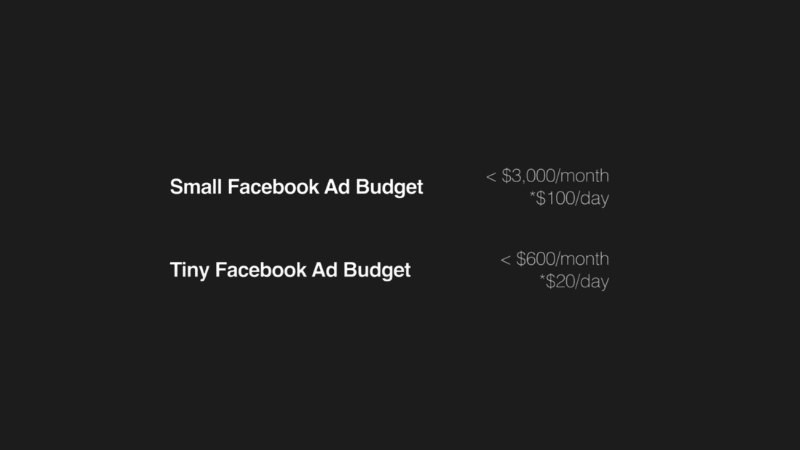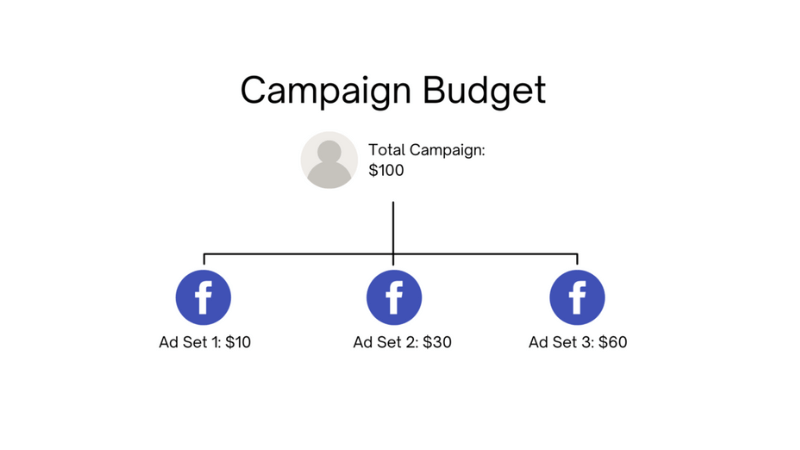Many business owners believe that to succeed with Facebook Ads, you must have a huge budget for testing and competition. However, this view isn’t entirely accurate. In the past, business owners often started Facebook advertising with a high budget to optimize ad scaling and customer targeting. They believed that by investing a significant amount of money in a campaign, their ads would reach a larger audience and result in more conversions. This view is not wrong, but it should only be applied to ads that are already performing well. With Meta’s improved algorithms, advertisers and businesses today can start setting up their campaigns with a low budget.
To succeed with a limited ad budget, you need a smart strategy and a disciplined approach. This can transform a modest Facebook ad campaign into a powerful tool for generating sales and profit. This article will not only debunk the myths about low-budget Facebook advertising but also provide you with a detailed roadmap to build, manage, and optimize your campaigns most effectively. Let’s dive into the details with Optimal.
Succeeding with a small Facebook ad budget
With a modest budget, many advertisers often believe that success on Facebook Ads is impossible. However, this view isn’t entirely correct. From the very beginning of our consulting services for clients, we have helped many of them achieve impressive results with a very small budget, often just $100 per month. This proves that with the right strategy, you can still achieve significant success. Now I want you to understand what it means to run Facebook ads with a limited budget.
The expert definition of a small budget

In the advertising industry, experts define a small budget as an investment of less than $3,000 per month, which is equivalent to about $100 per day. There is an even more modest budget of under $600 per month, or $20 per day.
In reality, starting with a limited budget is not a disadvantage; it’s a strategic starting point. The first ad campaigns often don’t deliver optimal results immediately because the system needs time to learn and optimize. Starting small helps you minimize financial risk, allowing you to freely experiment and learn without worrying about revenue pressure. Only when you’ve found profitable campaigns can you confidently scale up.
However, to achieve results with a limited budget, you can’t apply the same methods as large corporations. Success requires a different approach, one that focuses on smart and highly effective strategies.
Learn from the best ad practices in the industry
The biggest challenge of running ads on a small budget is that you don’t have enough resources to test extensively. You can’t allocate money to dozens of different formats, content pieces, or headlines to find a winning formula. Instead of fumbling in the dark on your own, the smartest way is to leverage the wisdom of those who have come before you.
The most powerful and free tool for this purpose is the Meta Ads Library. It’s an open treasure trove of information that allows you to see any ad that advertisers are running on Facebook and Instagram.
To use this tool effectively, search for and analyze your competitors in the industry. The most important tip is to focus on ads that have been running for a long time, for 3 months, 6 months, or more. If an ad is still live and consistently spending money, it is undeniable proof of its effectiveness. Very few companies maintain an ad that is not profitable. We also have a detailed article on how to spy on your competitors’ Facebook ads that you can refer to.
Once you find successful ads, don’t just mindlessly copy them. Analyze them more deeply:
- Why does it work?
- What format does it use? (static images, video, carousel…)
- What is the communication angle? (focusing on a problem, a solution, a story…)
- Is there anything special about the language used?
This helps you grasp the core principles that have been proven and apply them to your own ads. By doing this, you will save significant costs and testing time while immediately increasing the success potential of your ad campaign. This is how low-budget advertisers stand on the shoulders of giants, using the data and success of others to build their own path.
How to succeed at Facebook ads with a small budget
With a smart strategy and a deep understanding of how the platform works, you can absolutely generate significant profit even when your budget is very limited. The secret lies not in how much you spend, but in how you spend it.
Reduce the number of variables
When you start with a small budget, the biggest risk is that you will waste it on experiments that yield no results. Many people make the mistake of scattering their small amount of money across a series of campaigns, ad sets, and dozens of different ad creatives. As a result, each component receives too little spending, not enough to collect the necessary data and conversions. This prevents Meta from optimizing properly, causing the budget to be burned without any results.
To avoid this trap, the number one rule is to minimize variables. Focus your entire budget on a single core offer. If you have multiple products, choose the one that has sold best in the past. If you are a new business, prioritize the product you believe has the highest profit potential. This is because the greater the profit per order, the easier it is for your ad campaign to be profitable.
Concentrating all your resources on one campaign will ensure you receive enough data and conversions for the system to learn. Once you have proven the effectiveness of the core product, you can confidently scale up, introduce other products, and expand the campaign as your budget grows. This is the safest and smartest approach to building a solid foundation before expanding further.
Set up a campaign structure

One of the biggest advantages of the Meta platform today is its superior automation and optimization capabilities. With a small budget, you don’t have enough resources to “compete” with the algorithm. Instead, trust Meta and provide it with the best campaign structure to work with.
The most effective strategy for a low budget is to create a single campaign with a single ad set. Specifically, you should use an Advantage Shopping Plus campaign combined with broad targeting. This helps concentrate the budget and gives Meta’s algorithm full authority to find a potential customer audience.
In this ad set, you will place all the creative content for a specific product or offer. An effective tip is to start with two different static images and two different videos. The important thing is that these ads must have different angles—for example, a storytelling video and a simple product introduction video. Avoid creating repetitive versions that only change one small detail.
After setup, let Meta do its part. The algorithm will automatically allocate the budget to the best-performing ad, and you will see that only one or two ads receive the majority of the spending. This is not something to worry about. On the contrary, it shows that Meta is working effectively to maximize your ROAS (return on ad spend).
The only goal in this phase is to ensure your ROAS is as high as possible. A high ROAS not only brings immediate profit but is also the key to unlocking the ability to increase spending and expand revenue later. By focusing on creating an impressive ROAS, you are building an efficient money-making machine, ready for bigger developments in the future.
Manage and scale smartly
When you don’t have a large budget, every dollar you spend must provide value. Your goal should not be general awareness, but tangible results like leads or sales. Managing and scaling smartly is the key to turning a modest budget into an effective money-making machine.

Set realistic goals and prioritize profitability
Many small business owners often have unrealistic expectations about ad effectiveness. They want to achieve a return on ad spend (ROAS) of up to 10x, meaning they earn back $10 for every dollar they spend. However, for a new ad account or a business with a small budget, this number is almost impossible.
Instead of dreaming of huge profits, focus on a more realistic goal: reaching the breakeven point or a modest ROAS like 2x or 3x. This goal may not sound immediately appealing, but it is a key strategy to unlock sustainable growth. When you accept a lower profit, you will attract more customers, build a larger conversion database for Meta to optimize, and thus create the foundation to scale up in the future.
This is a smart trade-off: you may not make a lot of profit from each new customer, but you are building a solid foundation for business growth. As sales and data increase, you can start to increase your budget, and ad performance will gradually improve. Besides, you are also building a loyal customer base, generating revenue from repeat customers and word-of-mouth referrals, which are crucial for long-term success.
Don’t change campaigns too often
One of the fatal mistakes of new advertisers is constantly interfering with running campaigns. Once you create and activate a new campaign, it enters the “learning phase.” During this phase, Meta’s algorithm is testing and optimizing by finding a suitable target audience, the optimal time to show the ad, and the number of impressions needed to bring conversions.
Every time you make a major change, such as changing the budget, audience, or ad creative, you will reset the learning phase. This means your campaign will never have the opportunity to reach its maximum performance. For a small budget, the learning phase already lasts longer than for a large budget due to a lack of data, so constantly interfering will only cause money to be wasted without any conversions.
When a campaign starts running, it needs enough time to stabilize. Be patient and let Meta do what it needs to. Avoid making daily minor adjustments; instead, wait and evaluate the results holistically.
Base effectiveness on the number of conversions
A common question is: “How long should I let an ad run before I know if it’s working?” The answer is not a fixed number, but depends entirely on the number of conversions. A large ad account with thousands of purchases per day can determine the effectiveness of a new ad in just a few hours. In contrast, if you only get a few conversions per week, you may need to wait a few weeks or even a month to have enough reliable data.
When your budget is small, the number of conversions will also be lower, and therefore, evaluating effectiveness will take more time. So, expand your evaluation timeframe. Instead of rushing to turn off an ad after a few days, give it a chance to get through the learning phase and prove its performance. By doing so, you will make decisions based on real data rather than intuition, thereby building a sustainable and effective ad system for your business.
Conclusion
Succeeding with a small Facebook ad budget is the result of a disciplined strategy. Instead of wasting valuable budget on pointless experiments, start by learning from the proven experience of those who have come before you. Set realistic goals, like breaking even initially, because this is the key to unlocking the ability to scale later. By applying these principles correctly, a small budget will no longer be a barrier but a competitive advantage, helping you build a sustainable and profitable ad machine, ready for future breakthroughs.
With a small Facebook ad budget, how can I maximize my chances of success?
With a small Facebook ad budget, how can I maximize my chances of success? To succeed with a small Facebook ad budget, you need to focus on a few key strategies. First, minimize variables by only advertising a single product or service. Next, instead of testing on your own, learn from your competitors’ successful ads by using the Meta Ads Library.
It’s crucial to trust Meta and use its automation tools, as you don’t have the budget to waste. Also, be willing to accept a low initial return on ad spend (ROAS) to acquire data and build momentum. Finally, avoid brand awareness campaigns and aim directly for conversion goals (sales or leads) to ensure every dollar spent is effective.
Your initial goal isn’t profit, it’s data collection and momentum building. Accepting a low ROAS helps you acquire more customers, provides Meta with more data to optimize your campaigns, and creates a solid foundation to scale and increase profits later.